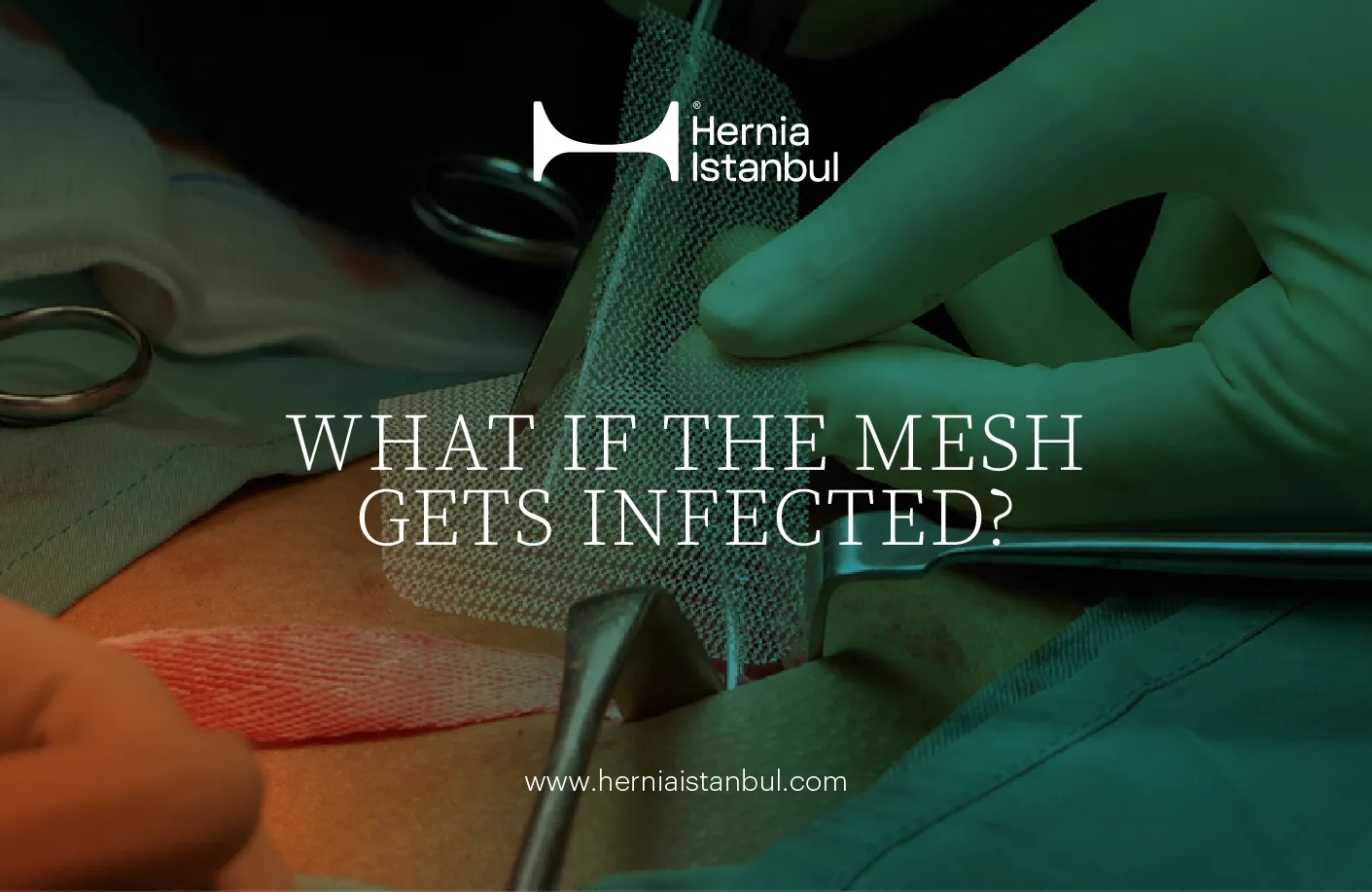
25 Jun 2023 Oh no! The MESH got infected!
Mesh repair is the gold standard for the repair of abdominal wall hernias. Non-mesh repairs have recurrence rates of over 50%, which are unacceptable. Just like any surgical procedure, hernia repair also has its complications, and one of them is mesh infections. Mesh infections are observed in approximately 10% of cases, particularly following incisional hernia repairs. This can be attributed to various factors, including the patient, the technique used, events during the surgical procedure, and finally, the characteristics of the mesh. Each of these factors is a separate topic of discussion. However, the main risk factors can be listed as diabetic patients, smokers, obese patients, presence of a stoma, bowel injury during surgery, bowel resection, emergency surgery, and prolonged surgery.
When there is an infection in the surgical area after hernia surgery, efforts should be made to determine the cause. Treatment should be directed accordingly. If possible, a sample should be taken for microbiological examination, and broad-spectrum antibiotics should be started immediately. Imaging methods such as ultrasound and computed tomography (CT scan) can provide valuable information about the source, depth, and extent of the infection, as well as whether the mesh is infected. Based on this information, a decision should be made regarding the need for drainage and/or debridement of the infection.
It is possible to protect the mesh from infection. If the aforementioned risk factors are present, individual measures should be taken to avoid mesh infection. Prior to surgery, if it is not an emergency operation, the patient should be well prepared by losing weight, controlling diabetes, and quitting smoking for at least one month. In morbidly obese patients, weight loss should be achieved through bariatric surgery first, followed by hernia repair after one year. We refer to all these measures as prehabilitation.
If a bowel injury occurs accidentally during surgery or bowel resection is performed, it would be the right decision to postpone placing the mesh to another session. When the bowel is not opened during surgery, the rate of mesh infection is 1.8%, whereas when the intestine is opened, this rate increases to 21.4%. The recurrence of the hernia also increases from 2.8% to 20%.
Large-pored polypropylene meshes are more resistant to infection compared to other meshes and have a slightly higher chance of being salvaged with the treatments performed in cases of infection. However, high expectations should still not be set. Polyester and especially ePTFE meshes should be removed if they become infected.
In case of infection, the surgical area should be drained, and the infection should be monitored clinically and through laboratory tests while administering antibiotics. These patients should be followed up for an extended period. Half of the mesh infections are diagnosed within the first three months. Although they are most commonly seen within the first year, they can occur up to two years.
Treatment aimed at salvaging the mesh generally fails, and in most cases, removal of the mesh becomes inevitable. If the mesh is infected or has resulted in a fistula, the entire mesh should be attempted to be removed. If only a part is removed, the risk of infection at the surgical site increases by 2.8 times, and the need for a re-invasive procedure for the patient increases by 3.4 times.
Each patient’s condition is different, and the safest approach should be taken. If the mesh has adhered to an important organ or vascular structure, no risks should be taken, and it should be removed as much as possible safely.
A promising advancement in the field of infection prevention involves the creation of advanced active meshes that are not only more biocompatible but also exhibit exceptional resistance against infections. By “active,” I mean loading the mesh with antimicrobial drugs using high technology so that it gradually releases them to provide protection against infection after being placed in the tissue. In the future, we will encounter antibiotic-loaded meshes, meshes processed with PRP or stem cells. Phase 0 studies (animal experiments) are being conducted for these described meshes, and promising results are being obtained.
In conclusion, mesh infection is a significant problem, especially in hernia surgeries, and caution should be taken in this matter. To prevent it, the patient should be well-optimized, and if an infection occurs, they should be referred to an experienced surgeon or center.